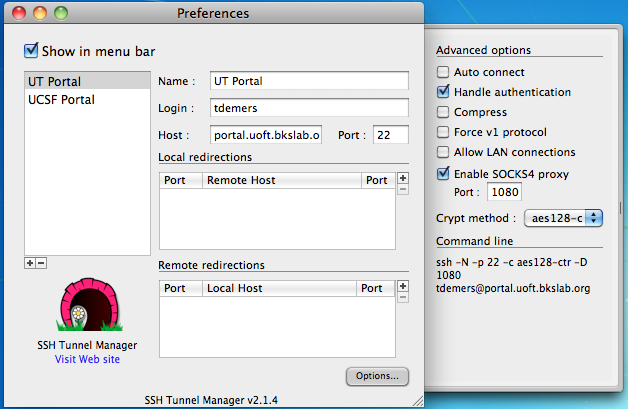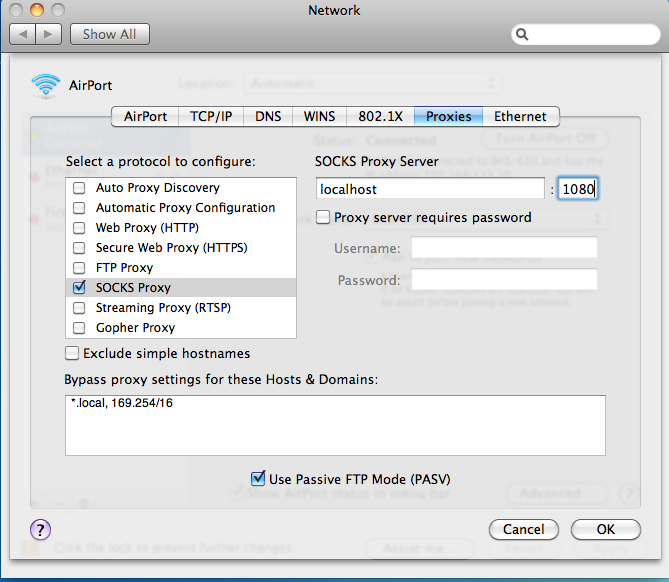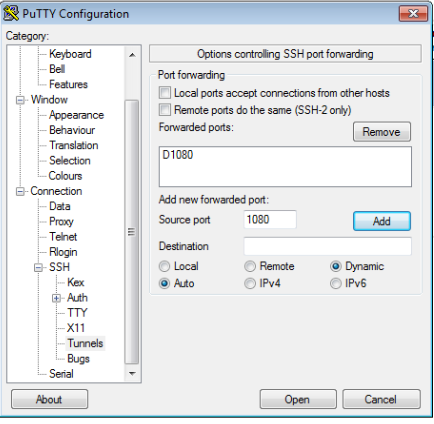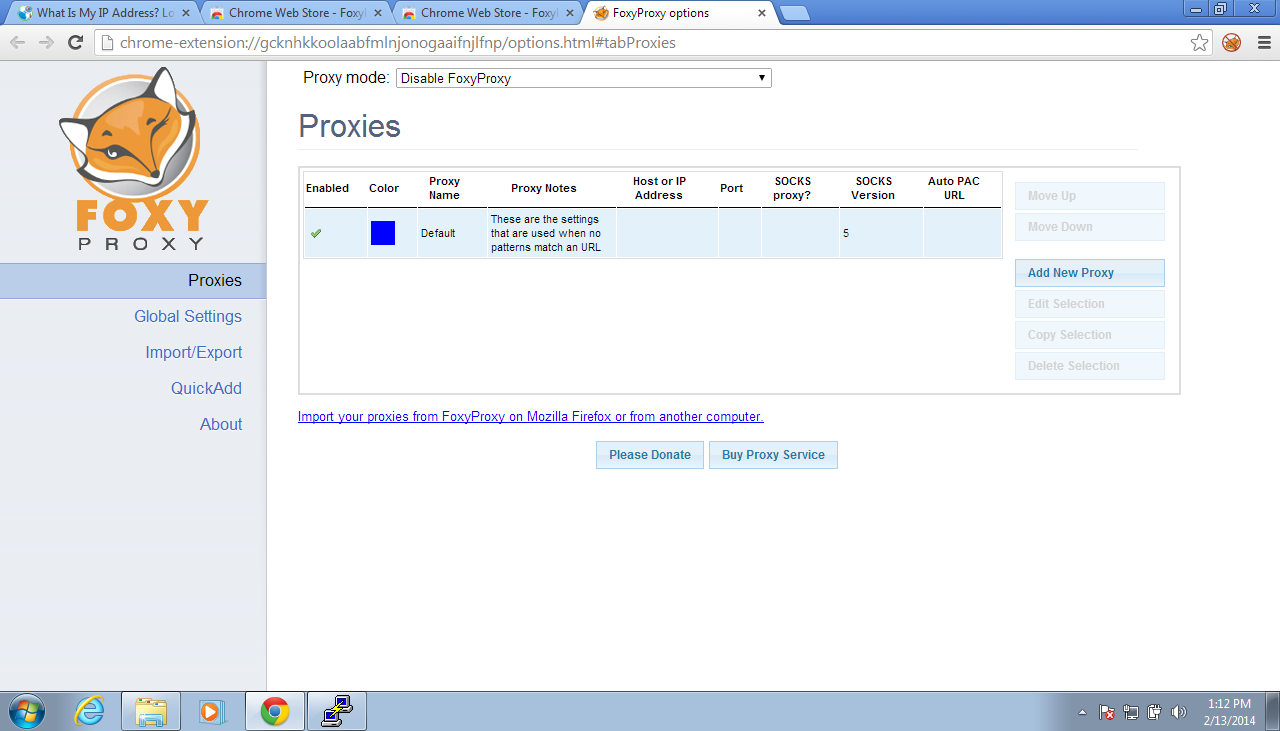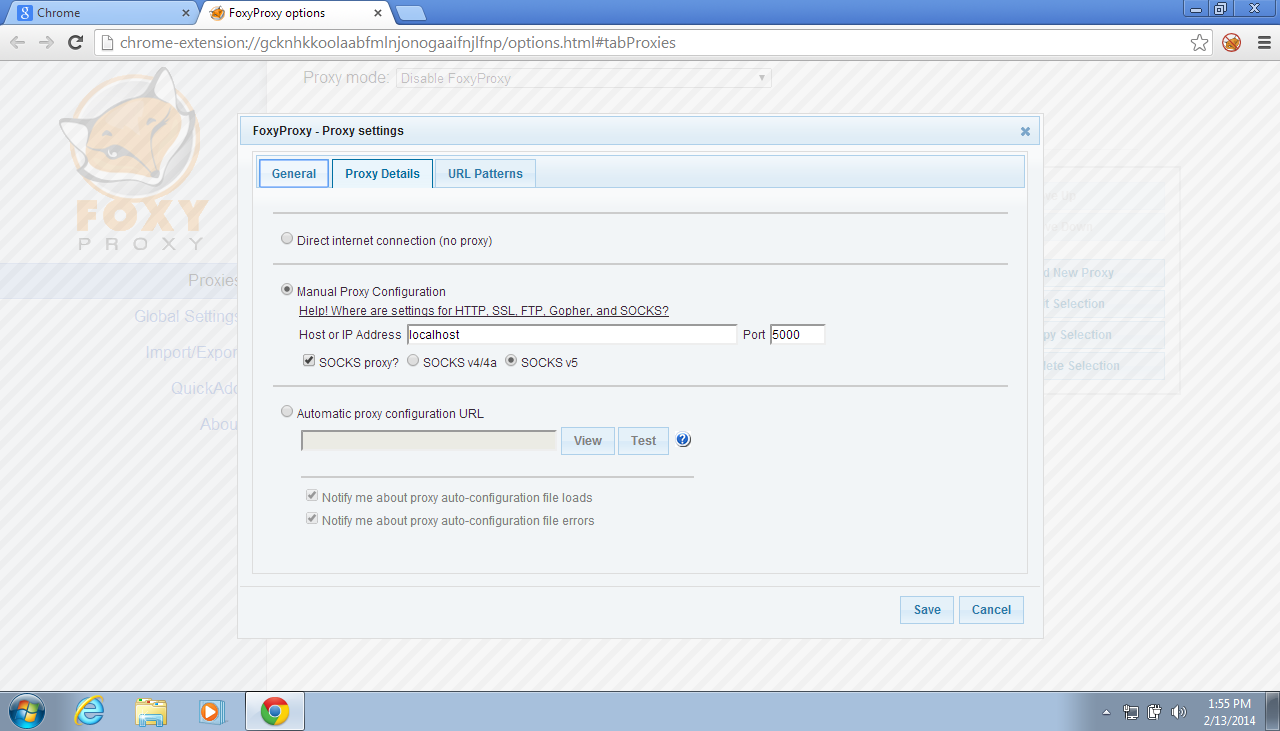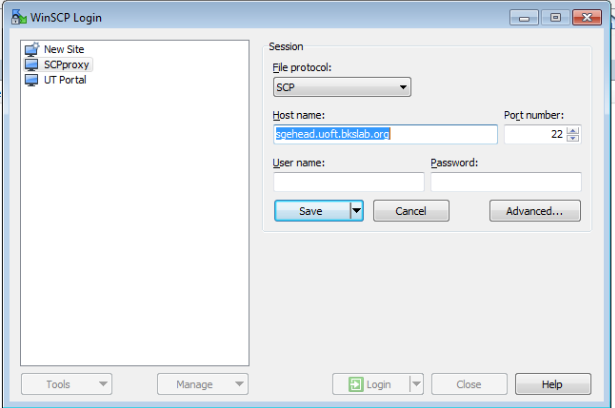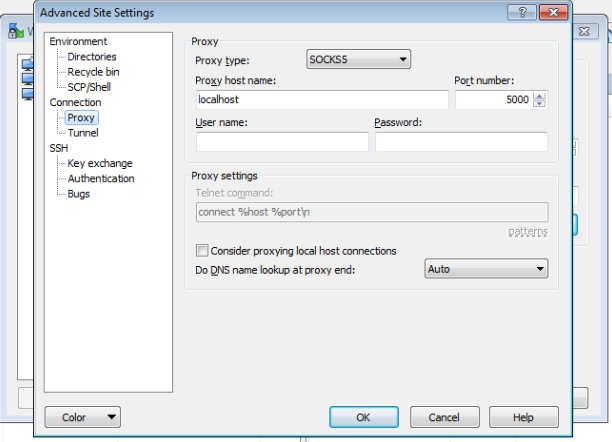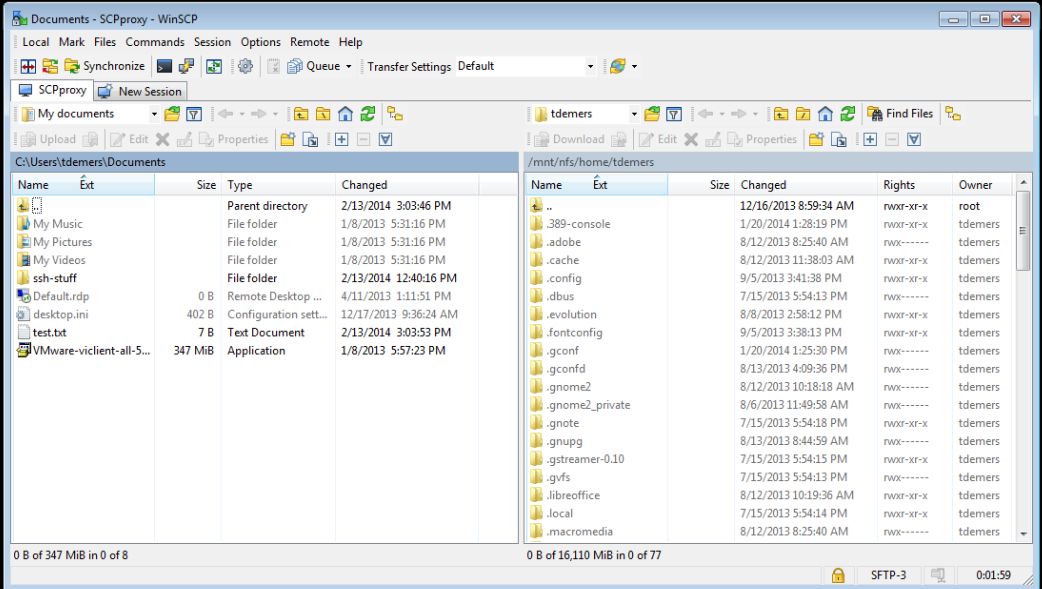How to create a vpn/ssh tunnel
FOR MAC OS
For command line options see the Linux section below, otherwise:
Go to the app store and search for “ssh tunnel manager”
Download this free app.
Click the “Show in menu bar” button on the upper lefthand corner.
Open it and then click the little ‘+’ sign on the bottom part of the white box.
Enter the following information:
For the Name field, name it whatever you want.
Login: your_user_name
Host: portal.uoft.bkslab.org
Port: 62
Then click on the Options button in the bottom righthand corner.
Make sure “Handle authentication” is checked and check the “Enable SOCKS4 proxy”.
Make sure the port is 1080 (or something above port 1024).
Your screen should look like this (except with port 62 rather than 22):
Then close the SSH Tunnel Manager.
Go to System Preferences -> Network
Click on the connection you are connected to (ie Airport, Ethernet, etc).
Then click on Advanced in the bottom right corner.
Then click on Proxies up in the top right of the box.
Then check SOCKS Proxy
Then under “SOCKS PROXY SERVER” enter localhost and to the right 1080 (or whatever port you decided to use previously).
It should look like this:
Click OK, then apply.
Then go to the ssh Tunnel Manger and click the “play”button on the right hand side:
It should say connected and possibly prompt you for your password (the one associated with your ssh key).
To test if your tunnel is good, go to: http://whatismyipaddress.com/
This will tell you what ip address you have. If it says the IP address of the remote host you're connecting to in putty, you are good to go! :)
Your computer will now act as if you were connected to the internet in the lab.
When you’re done with the vpn session click on the ssh Tunnel Manager and click the “stop” button.
Then go to System Preferences -> Network -> Advanced -> Proxies
and uncheck the SOCKS Proxy, click OK, then apply.
That’s it!
FOR LINUX (COMMAND LINE)
I am going to illustrate how to create a ssh tunnel using a couple examples.
Pretend you want to create a ssh tunnel from your laptop to sgehead through the portal.
First open two terminals. In one terminal type the following:
ssh -p 62 -L 1080:sgehead.uoft.bkslab.org:22 portal.uoft.bkslab.org -N
In the other terminal type:
ssh -p 1080 localhost
Then when you log in type hostname and you will see that you are logged into sgehead!
Here's another example, say you want to scp files directly from your laptop to your home directory on sgehead.
First open two terminals. In one terminal type the following:
ssh -p 22 -L 1080:sgehead.uoft.bkslab.org:22 portal.uoft.bkslab.org -N
In the other terminal type:
scp -P 1080 file_you_want_to_copy localhost:~
FOR WINDOWS OS
Open putty.exe and select the session that you want to use as a ssh tunnel (ie portal.uoft.bkslab.org).
Then click on Connection -> SSH -> tunnels
In Source Port enter 1080 (or any port above 1024).
Then click the Dynamic button and then click Add.
It should look like this:
Then go back to Session and click Save.
Then download the "standard" version of FoxyProxy here: http://getfoxyproxy.org/downloads.html
Once you’ve downloaded it there should be a little fox picture next to the url bar (upper right hand corner of web browser). Click on that little picture and select Options from the dropdown list.
You should see this:
Click on Add New Proxy
Then click on the General tab.
Enter a proxy name and then select the Proxy Details tab.
Enter “localhost” in “Host or IP Address” and 1080 for “Port” (or whatever port number you entered in putty).
Click the “SOCKS proxy?” Button and make sure the “SOCKS v5” button is also clicked.
Your screen should look like this:
Then click Save.
Then click on the fox again on the upper right hand corner and click on “Us proxy whatever_you_named_it Proxy for all URLs”
Then click on putty and open your session. A terminal will pop up and ask for your passphrase. Enter your passphrase (for your ssh key). That’s it!
To test if your tunnel is good, go to: http://whatismyipaddress.com/
This will tell you what ip address you have. If it says the IP address of the remote host you're connecting to in putty, you are good to go! :)
This session will remain open as long as your ssh putty session is open.
To scp files in Windows through this ssh tunnel, download WinSCP here: http://winscp.net/download/winscp551setup.exe
Once it finishes downloading, run it and go through all the prompts. You can (if you want) to import all your existing sessions from putty, but it’s really not necessary.
Once it’s done, open it.
Click on “New Site”.
Then, in the File protocol drop down menu, select SCP.
In Host name, put the host name or IP address of the machine you want to transfer files to.
Keep the port number as 22. It should look something like this:
Then click on Advanced -> Connection -> Proxy
Click on the “Proxy type” drop down menu and select SOCKS5.
For “Proxy host name” write localhost. Make the port number 1080 (or whatever port you chose to use in putty).
it should look like this:
Click OK, then Save.
It will prompt you to enter a name, call it whatever makes sense to you.
Assuming that your putty session is still open, click Login.
It should prompt you to enter your username and password in the bottom.
You should then see a screen that looks like this:
To transfer files from one to the other, select the file that you want to transfer and then click “Upload” to transfer files to the server and then specify which folder you want to save it to. If you are downloading files from the server to your computer, click the file you want to download and then click “Download” and specify where you want to download it to.
To exit, click on session -> disconnect
When you are done with your vpn session, exit from the ssh putty session (type exit on the terminal screen).
Then, on your browser, click on the little fox in the upper right hand corner and select “Disable FoxyProxy”.
